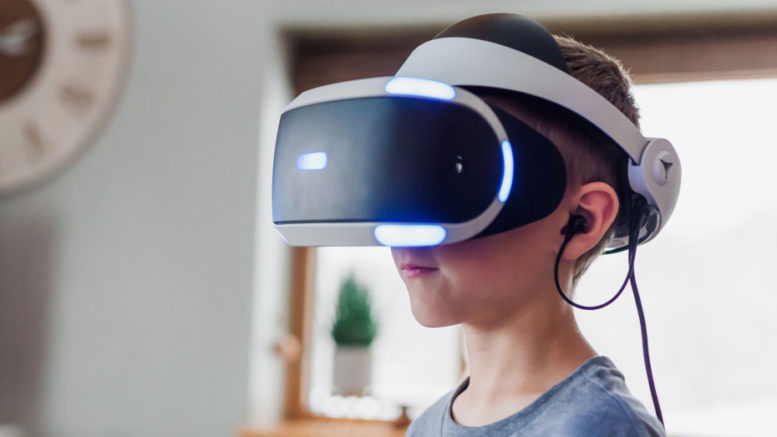Technology’s role in education has significantly changed in recent years. The current educational system has transitioned due to the revolutionary changes brought about by technological breakthroughs in how pupils learn, and professors impart knowledge. Technology has altered how modern education is given, giving students new and creative methods to study. Examples include online learning, individualized training, and virtual and augmented reality. Additionally, technology has increased education access and given students new opportunities worldwide. The ubiquitous accessibility of information, interactive courses, and collaborative learning has significantly impacted modern education and changed how students learn and relate to one another.
This essay will examine 7 ways technology is transforming contemporary education, emphasizing its advantages and effects on the educational system. It is evident that technology has had a huge part in influencing our everyday lives and the future of education and will do so in the years to come, whether you are a student, pedagogue, or parent.
Access to Information
Giving pupils access to a wealth of materials is one of the most significant ways technology has changed education. Due to the increasing internet use, students can now access various materials and data whenever and wherever they choose. This contains, among other things, online textbooks, instructional videos, and journal articles. Students may take ownership of their learning and become more self-directed by accessing various resources. Students have been able to broaden their comprehension of the subjects they are learning, which has given them fresh views on their assignments.
Personalized Learning
Additionally, technology makes education more individualized, allowing students to get instruction specifically catered to their needs and skills. A student’s performance can be analyzed by instructional software using artificial intelligence and machine learning, and the material’s complexity can then be changed in accordance. Doing this makes it possible for each student to be challenged at their own level and advance at their own rate. Additionally, personalized learning allows pupils to concentrate on their areas of weakness and take care of their particular learning requirements. This has boosted academic achievement by increasing student involvement and motivation.
Online Learning
Another significant way that technology is influencing modern education is through online learning. Students now have access to various online courses that they may take from the comfort of their homes thanks to the development of the internet. This allows students to study whenever and wherever they want, free from the restrictions of a typical classroom environment. Students who take online courses can access more subjects and resources than they would at a conventional brick-and-mortar school. For instance, students can now get helpful year 9 online courses that are offered online, enabling students to enroll in classes that aren’t generally offered in a traditional environment. Students can access everything from professionally-made lessons that can be accessed from anywhere and anytime. Depending on the student’s learning needs, these can be replayed, paused, and sped up. Online classes come with regular tests and homework. For various reasons, this has provided pupils with fresh opportunities, especially those previously robbed of education experiences.
Virtual and Augmented Reality
The way students study and experience education has changed due to virtual and augmented reality. With the aid of these technologies, students can engage in immersive and interactive learning experiences that vividly bring the subject to life. For instance, anatomy students can explore the human body using virtual and augmented reality to understand complex concepts better. Students who participate in this style of learning not only become more interested in the material and have a more profound knowledge of it. Virtual and augmented reality also has the potential to completely change the way education is delivered by allowing students to engage with learning in novel and creative ways.
New Forms of Assessment
Additionally, technology has made new assessment methods possible, including interactive simulations and online tests. These tests offer a more accurate image of a student’s comprehension of the subject matter and give teachers a better notion of any areas where the student might require more assistance. Additionally, they give students a more exciting and dynamic way to show what they know. This has increased assessment accuracy while giving pupils a more positive and fulfilling assessment experience. New evaluation methods have also made it easier for teachers to give pupils immediate feedback, allowing them to improve their performance quickly.
Engaging and Interactive Lessons
With technology, educators can design interactive lessons beyond the monotonous lecture format. Teachers can develop engaging and instructive classes with multimedia elements like films, animations, and interactive simulations. As a result, there has been an improvement in academic performance and increased student engagement. Additionally, thanks to technology, instructors may include gamification, sometimes transforming dull subjects into fun, engaging activities. This keeps students interested while also giving them a memorable learning experience.
Collaborative learning
Thanks to technology, students may now collaborate and complete projects and assignments together, regardless of where they are physically located. Students can collaborate online in real time while exchanging ideas and sharing resources using programs like Google Classroom and Microsoft Teams. This has enhanced students’ capacity to cooperate and work in groups, giving them a more interesting and participatory learning environment. Additionally, collaborative learning has allowed students to interact and collaborate with peers worldwide, fostering cross-cultural understanding and global awareness.
In conclusion, technology has fundamentally altered the nature of contemporary education in ways that were previously regarded as impossibilities. Technology is enabling new types of evaluation, personalizing the learning process, and developing more exciting and interactive classes for students. Examples include virtual and augmented reality, online learning, and more. Technology’s influence on education will probably only increase as it develops further. The possibilities for education’s future are limitless and fascinating.
